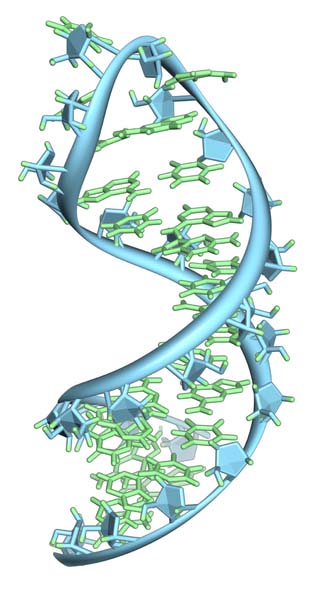

Ribonucleic acid (RNA) is a polymeric molecule essential in various biological roles in coding, decoding, regulation, and expression of genes. RNA and DNA are nucleic acids, and, along with proteins and carbohydrates, constitute the four major macromolecules essential for all known forms of life. Like DNA, RNA is assembled as a chain of nucleotides, but unlike DNA it is more often found in nature as a single-strand folded onto itself, rather than a paired double-strand. Cellular organisms use messenger RNA (mRNA) to convey genetic information (using the letters G, U, A, and C to denote the nitrogenous bases guanine, uracil, adenine, and cytosine) that directs synthesis of specific proteins. Many viruses encode their genetic information using an RNA genome.
Some RNA molecules play an active role within cells by catalyzing biological reactions, controlling gene expression, or sensing and communicating responses to cellular signals. One of these active processes is protein synthesis, a universal function where RNA molecules direct the assembly of proteins on ribosomes. This process uses transfer RNA (tRNA) molecules to deliver amino acids to the ribosome, where ribosomal RNA (rRNA) then links amino acids together to form proteins. Read more
Scientists Discover RNA Component Buried in The Dust of an Asteroid Science Alert - March 21, 2023
A sample extracted from an asteroid far from Earth has confirmed that RNA nucleobases can be found in space rocks. Analysis of dust ferried home from asteroid Ryugu has been found to contain uracil - one of the four nucleobases that make up RNA - in addition to niacin, a form of the vitamin B3, which plays an important role in metabolism.
Researchers Have Discovered a Mutation That Significantly Increases Lifespan. The study found that faulty RNA processing can result in longer life Sci Tech Daily - November 9, 2022
Life on Earth began as inserts in an experiment or Simulation that had a beginning and is about to end.
There's Growing Evidence Life on Earth Started With More Than Just RNA Science Alert - July 18, 2022
How life originated on Earth continues to fascinate scientists, but it's not easy peering back billions of years into the past. Now, evidence is growing for a relatively new hypothesis of how life began: with a very precise mix of RNA and DNA.
Scientists Create RNA That Evolves on Its Own. This Could Be How Life on Earth Started Science Alert - March 18, 2021
We just received more evidence that life on Earth may have started with RNA, with scientists in Japan creating RNA that can replicate, diversify, and develop complexity all on its own. Long before Earth had its first budding cells of primordial ooze, it was awash with a churning organic soup that sat on the brink of something profound. That thin line between complex chemistry and the evolution of life represents a pivotal moment in the emergence of biology. Unfortunately, for all of its importance, we know very few details about exactly how it happened.
Mesmerizing Video Reveals RNA Folding in All Its Strange, Tangled Glory Science Alert - January 19, 2021
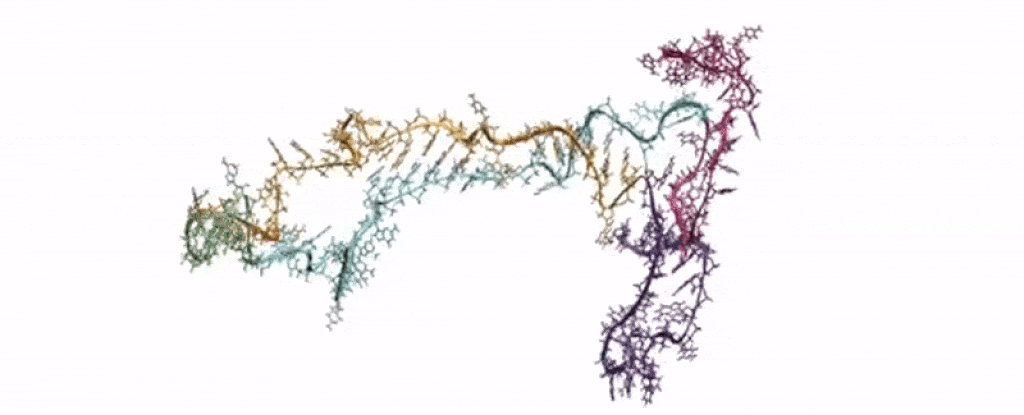
Striking new videos show how RNA - the genetic molecule that tells cells how to build proteins - tangles up in insane knots as it forms, only to disentangle itself at the last second, and in a way that took scientists by surprise.
Improved gene expression atlas shows that many human long non-coding RNAs may actually be functional PhysOrg - March 2, 2017
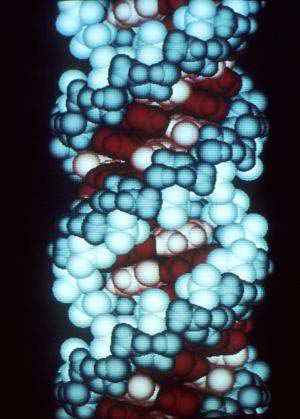
While it was once believed that genes regulated biological functions almost exclusively by being transcribed to coding RNAs that were then translated into proteins, it is now known that the picture is much more complex. In fact, studies examining the association between genes and diseases have shown that most disease variants are found outside of protein-coding genes.
 Forget DNA, experts say RNA could hold the key to 'eternal life pill' Daily Mail - October 8, 2016
Forget DNA, experts say RNA could hold the key to 'eternal life pill' Daily Mail - October 8, 2016
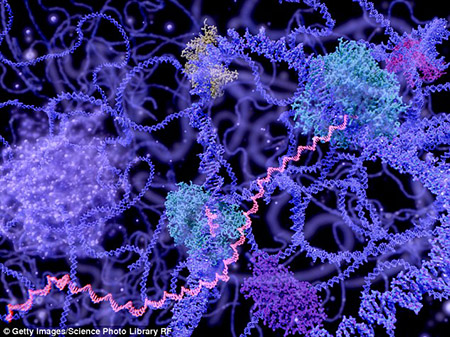
The benefit of manipulating RNA rather than DNA is that the cell's blueprint does not change, which could cause unpredictable, permanent changes to the cell. This focus on RNA represents a potentially major shift in how scientists try to prevent cellular damage.
Tags on RNA silence X chromosome in females PhysOrg - September 19, 2016

The addition of a chemical tag on an RNA molecule is the critical switch that inactivates one X chromosome in every cell, ensuring healthy development in all female mammals, according to new research. The findings could offer researchers a new scientific avenue to pursue treatments for X-linked chromosomal diseases in females.
Faulty gene linked to depression and cardiovascular disease Medical Express - September 13, 2016
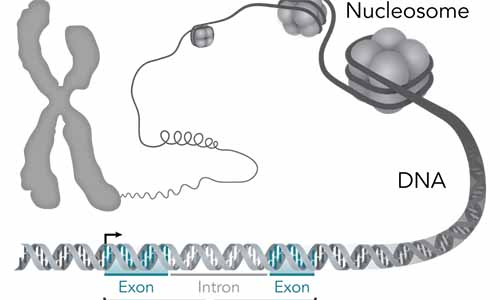
Stylistic diagram shows a gene in relation to the double helix structure of DNA and to a chromosome (right). The chromosome is X-shaped because it is dividing. Introns are regions often found in eukaryote genes that are removed in the splicing process (after the DNA is transcribed into RNA): Only the exons encode the protein. The diagram labels a region of only 55 or so bases as a gene. In reality, most genes are hundreds of times longer.
Chemists offer more evidence of RNA as the origin of life PhysOrg - May 14, 2016
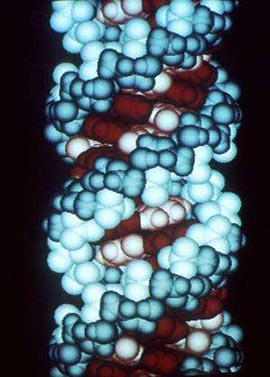
A team of chemists at Ludwig Maximilian University of Munich has shown how the purines adenine and guanine can be synthesized easily and in reasonable yields, offering more evidence that RNA could have served as the origin of life on Earth. The team describes the process they took in looking for evidence that RNA could have been the first self-replicating molecule that eventually led to all life on our planet and what they found.

A new study pinpoints the precise mechanism that turns the inheritance of environmental influences "on" and "off."
Biological mechanism passes on long-term epigenetic memories Science Daily - March 28, 2016
According to epigenetics -- the study of inheritable changes in gene expression not directly coded in our DNA -- our life experiences may be passed on to our children and our children's children. Studies on survivors of traumatic events have suggested that exposure to stress may indeed have lasting effects on subsequent generations. But how exactly are these genetic "memories" passed on?
Researchers have been preoccupied with how the effects of stress, trauma, and other environmental exposures are passed from one generation to the next for years. Small RNA molecules -- short sequences of RNA that regulate the expression of genes -- are among the key factors involved in mediating this kind of inheritance. Dr. Rechavi and his team had previously identified a "small RNA inheritance" mechanism through which RNA molecules produced a response to the needs of specific cells and how they were regulated between generations.
Why an extra helix becomes a third wheel in cell biology PhysOrg - July 3, 2014
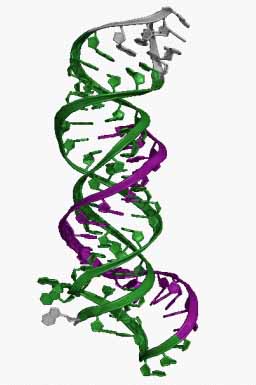
In a literal scientific twist, researchers are finding examples of a third strand that wraps itself around RNA like a snake, a structure rarely found in nature. Researchers recently have discovered evidence of a triple helix forming at the end of MALAT1, a strand of RNA that does not code for proteins. This extra strand of RNA, which is seen in the accompanying movie, prevents degradation of MALAT1. The formation of a triple helix explains how MALAT1 accumulates to very high levels in cancer cells, allowing MALAT1 to promote metastasis of lung cancer and likely other cancers.
Scientists shed some light on biological "dark matter" PhysOrg - January 20, 2014

Biologists have studied the functionality of a poorly understood category of genes, which produce long non-coding RNA molecules rather than proteins. Some of these genes have been conserved throughout evolution, and are present in 11 species ranging from man to frog. By adopting an evolutionary approach, they discovered that about 2500 long non-coding RNAs first appeared at least 90 million years ago in the common ancestor of most placental mammals. From a functional point of view, these "ancient" genes turned out to be particularly interesting.
Origins of genomic 'dark matter' discovered PhysOrg - September 19, 2013
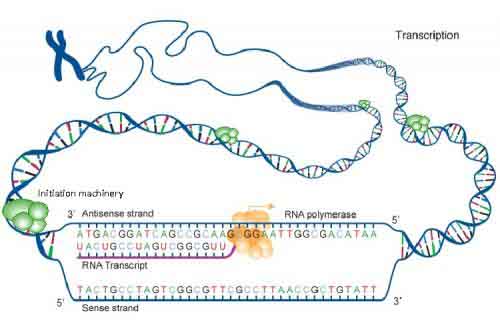
A duo of scientists at Penn State University has achieved a major milestone in understanding how genomic "dark matter" originates. This "dark matter" - called non-coding RNA - does not contain the blueprint for making proteins and yet it comprises more than 95 percent of the human genome. The researchers have discovered that essentially all coding and non-coding RNA originates at the same types of locations along the human genome. The team's findings eventually may help to pinpoint exactly where complex-disease traits reside, since the genetic origins of many diseases reside outside of the coding region of the genome.
A mystery solved: How genes are selectively silenced PhysOrg - October 18, 2010
Cells read only those genes which are needed at a given moment, while the others are chemically labeled and, thus, selectively turned off. Scientists at the German Cancer Research Center have now been the first to discover how these labels are placed at exactly the right spot in the genetic material. Important players are regulatory RNA molecules. They form a plait-like triple helix with the DNA serving as a signpost for the labels.
Software reveals the inner workings of the human genome PhysOrg - January 12, 2010
A biologist and computer scientist seek sites of RNA editing, a phenomenon that plays a key role in human genetic complexity. The completion of the Human Genome Project, says Stefan Maas, has allowed scientists to dream on a grand scale. Armed with unprecedented knowledge of the body’s genes and their location and function, scientists can contemplate advances in medicine and biotechnology that were hardly conceivable a decade or two ago. This new genetic blueprint, says Maas, an assistant professor of biological sciences, could shed light on the origins of cancer, ALS (amyotrophic lateral sclerosis) and a host of other diseases and lead to new treatments for these diseases.
Evolutionary Surprise: Eight Percent of Human Genetic Material Comes from a Virus Science Daily - January 8, 2010
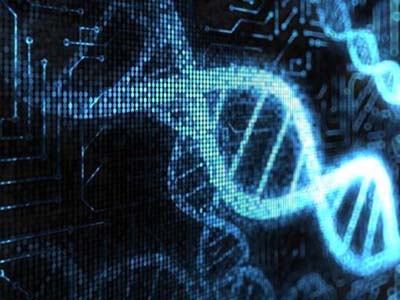
About eight percent of human genetic material comes from a virus and not from our ancestors, according to researchers in Japan and the U.S. The research showed that the genomes of humans and other mammals contain DNA derived from the insertion of bornaviruses, RNA viruses whose replication and transcription takes place in the nucleus. Feschotte wrote on recent research led by Professor Keizo Tomonaga at Osaka University in Japan. Feschotte said this virally transmitted DNA may be a cause of mutation and psychiatric disorders such as schizophrenia and mood disorders.
How Did Life Begin? RNA That Replicates Itself Indefinitely Developed For First Time Science Daily - January 10, 2009
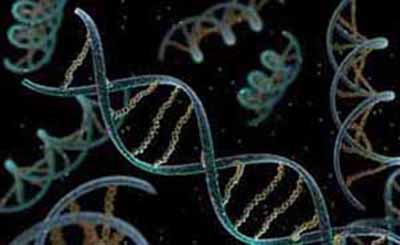
One of the most enduring questions is how life could have begun on Earth. Molecules that can make copies of themselves are thought to be crucial to understanding this process as they provide the basis for heritability, a critical characteristic of living systems. New findings could inform biochemical questions about how life began. Now, a pair of Scripps Research Institute scientists has taken a significant step toward answering that question. The scientists have synthesized for the first time RNA enzymes that can replicate themselves without the help of any proteins or other cellular components, and the process proceeds indefinitely.
Scientists develop first examples of RNA that replicates itself indefinitely PhysOrg - January 10, 2009
Now, a pair of Scripps Research Institute scientists has taken a significant step toward answering that question. The scientists have synthesized for the first time RNA enzymes that can replicate themselves without the help of any proteins or other cellular components, and the process proceeds indefinitely. In the modern world, DNA carries the genetic sequence for advanced organisms, while RNA is dependent on DNA for performing its roles such as building proteins. But one prominent theory about the origins of life, called the RNA World model, postulates that because RNA can function as both a gene and an enzyme, RNA might have come before DNA and protein and acted as the ancestral molecule of life. However, the process of copying a genetic molecule, which is considered a basic qualification for life, appears to be exceedingly complex, involving many proteins and other cellular components.
Spotty mice flout genetics laws BBC - May 24, 2006
Mice get trait without gene ...
Scientists have for the first time shown that animals can defy the laws of genetic inheritance. Researchers found that mice can pass on traits to their offspring even if the gene behind those traits is absent. The scientists suggest RNA, a chemical cousin of DNA, passes on the characteristic - in this experiment, a spotty tail - to later generations.